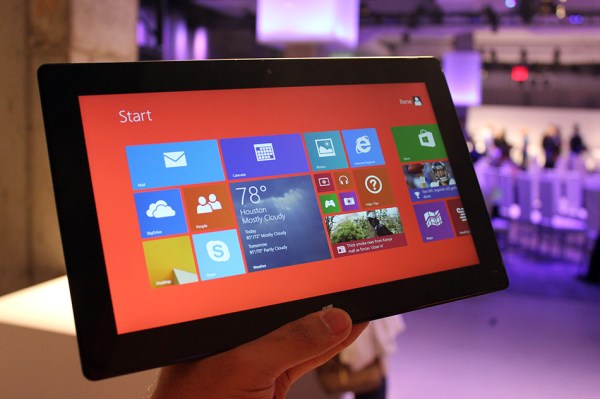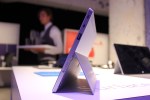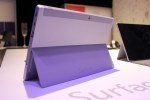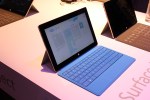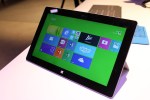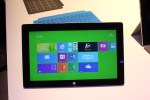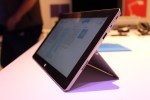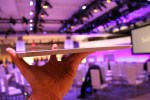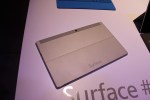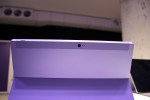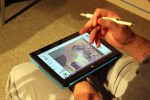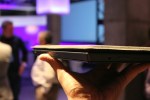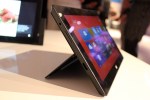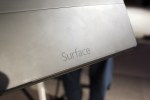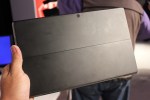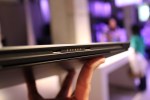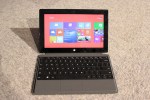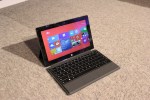Now that the dust from Microsoft’s Surface event has settled, we’re left with two new tablets and one grand vision for the holidays — with three Surfaces now on the market, Microsoft has carved out a seemingly strong position for itself as people began to plan for some big purchases.
But really, how solid are Microsoft’s hardware plans? Alex went over most of the details during his own hands-on impressions, but here’s another take on the company’s new Surface tabletsjust for the sake of completeness. Oh, and if you’ve got about an hour to kill, you can watch the full event unfold here.
Surface 2
I have a habit of backing the wrong horses — the only phone I ever waited in line for was the Palm Pre, and the only tablet I ever waited in line for was the original Surface RT. The big issue seems to be that I’m a sucker for interesting hardware, and the Surface series is nothing if not interesting. The Surface 2 easily clears the bar set by its predecessor, though that may not be saying a whole lot.
Let’s consider the innards. My old RT seemed to groan under the weight of certain apps and services, but the Surface 2 seems better equipped to deal with the ol’ daily routine thanks to the inclusion of an NVIDIA Tegra 4 chipset (and 2GB of RAM) — it seemed plenty snapped as I fired up apps and swiped through websites. Battery life has gotten a boost as well, though the original was generally pretty trusty when it came to longevity, too.
And let’s not forget the screen. The increased color accuracy and bump in screen resolution (1080p vs 768p) means that the Surface 2’s display is a far cry over the panel Microsoft went with the last time. Sound quality has apparently been improved as well thanks to the inclusion of Dolby Digital sound, though it was nigh impossible to really get a feel for those aural nuances in a room full of loud, clamoring journalists.
There are little things, too. Though the weight difference between the original Surface and the Surface 2 is basically negligible (4 grams, if you’re splitting hairs), this new model feels remarkably more svelte and portable. The new color scheme is also pretty fetching; the Surface Pros retain their dark magnesium chassis, but the RT model is clad in a matte, smudge-resistant gray that serves as a neat little visual differentiator. It looks and feels great.
And yet I still can’t help but think the Surface 2 suffers from the same issue its older brother did: The hardware itself is respectable, impressive even, but Windows RT still doesn’t feel like it’s up to snuff from a consumer standpoint. There’s no denying that Windows 8.1 RT has patched some considerable holes and added some much-needed functionality to the mix, and the number of apps available in the Windows Store continues to swell — there are now more than 100,000 of them waiting to be downloaded. Still, running a version of Windows that can’t run the same apps or perform the way full-blown Windows devices do can be a hard proposition to grok for your average holiday buyer.
Regardless, this new version is a clear improvement over the model that came before, and with a price tag starting at $449, the Surface 2 just may give the iPad a run for its money (unless you wanted one of those fancy keyboard covers). I’m not convinced that RT is going to be around for the long haul, but I hope Microsoft manages to surprise me.
Surface Pro 2
Your mileage may vary, but I can’t help but think of the Surface Pro 2 as the real eyecatcher of the day. Yes, it looks functionally identical (by which I mean dark and chunky) to the model that came before it. Yes, the improvements may seem incremental. That said, all these changes add up in such a way that the Pro 2 seems like an awfully compelling piece of kit.
Inside the Pro 2 is a 1.6GHz Intel Core i5 chip, and you’ve got your choice of RAM and storage configurations (the priciest model tops out with 8GB of RAM and a 512GB SSD). It’s always tricky to get a feel for performance out in the field — and on apparently non-final hardware no less — but the Pro 2 easily kept up with me as I fired up apps with reckless abandon and indulged in a little midday Portal 2. Surface GM Panay said that the Pro 2 is more powerful than 95 percent of laptops on the market, and I’m looking forward to really putting this thing through its paces once the final models hit store shelves.
And then there’s the battery. Let’s face it: the Surface Pro was downright wimpy when it came to battery life, a major strike against the more robust tablet. This time around, we’re told that the Surface Pro 2 lasts between 60 and 75 percent longer than the model that preceded it — going off the results we saw in our review, that should net users somewhere between six and eight hours. Maybe not up to par with some of the more competitive ultrabooks out there, but it’s a damn sight better than what we’re used to with the older model. Throw in a 10.6-inch 1080p screen that’s tuned for color accuracy like the Surface 2 and you’ve got quite a mobile companion.
Well, sort of. With all that said, the form factor still presents some issues. No matter how clever Microsoft has been with its new two-stage kickstand design (and it’s really rather useful), propping a tablet on your lap and pecking away on a touchscreen is a tricky proposition for mobile workhorses. I don’t know that I’d necessarily choose the Surface Pro 2 over a more traditional notebook, but it’s definitely worth a second look if you’re shopping for your next portable PC.
